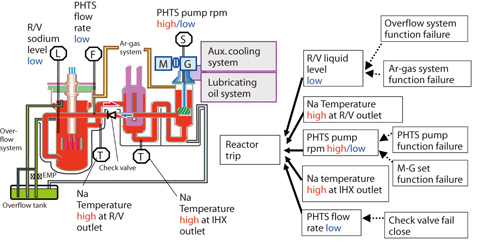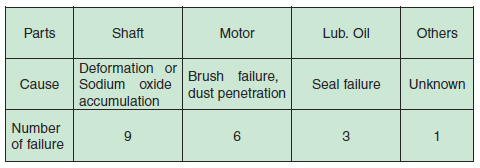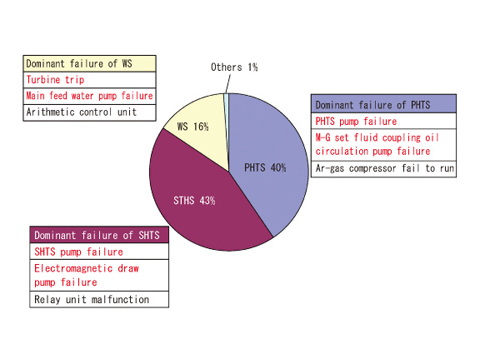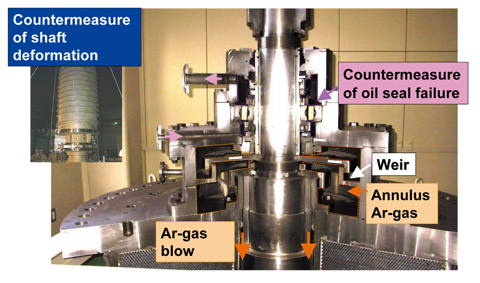
Fig.1-29 Reactor trip on primary system
Table1-3 Actual case of mechanical sodium pump failure (19 cases)


Fig.1-30 FTA result

Fig.1-31 Countermeasures of mechanical sodium pump
Since safe and stable operation is required for nuclear power plants, including the fast breeder prototype reactor "MONJU", it is important to reduce occurrence of unplanned shutdowns of power operation as much as possible.
To improve operational reliability, we have performed fault tree analysis (FTA) to identify the important component failures leading to reactor trip, and to estimate the reactor trip frequency.
The fast breeder reactor component reliability database "CORDS" and Japanese LWR component failure database were used in the FTA of "MONJU". As the result of FTA, the reactor trip frequency was estimated as 1.2/reactor year, and the primary and secondary main circulation pumps were identified as the important components.
The failure cases of sodium circulation pumps recorded in "CORDS" database were refereed to in designing countermeasures in similar mechanical sodium pumps of "MONJU". Therefore high operational reliability has been kept and the actual reactor trip frequency is expected to be smaller than the FTA prediction.
Through this study,
(1) The components crucial to "MONJU" operational reliability have been identified.
(2) Frequency of unplanned reactor shutdown based on the current component failure rate has been estimated to be slightly higher than domestic LWRs, but the actual value is seen to be significantly smaller, due to the countermeasures against pump failures.
(3) If there are modifications to "MONJU" new prediction of unplanned reactor shutdown frequency has been enabled, through appropriate amendment of the fault tree.